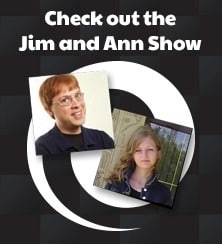
Most people have more than one single responsibility at work. For a lot of us, a normal day consists of doing a lot of different tasks rather than one single repetitive action. Your website content is no exception. From day to day and from user to user your content serves different purposes. But no employee can perform a wide range of tasks without proper training, and no content can fulfill all of its possible roles without time and attention to detail.
The kind of content I’m talking about today isn’t so much what we consider linkable content. The content you provide because it’s so independently interesting, useful or compelling that it has the potential to get links from other sites. Are there ways to make any kind of content more linkable? Yes, absolutely. But in this case, the focus is on your more commercial, landing page content.
Information
Let’s start with the most obvious function. Your content should inform visitors of your business, brand, service, products and over-arching purpose for existence. It may extol your virtues, why you are superior to your competitors.
It may explain your process, your history or your value factors. It can do all of that. In fact it needs to do all of that or it’s not very good commercial web content. Some content is meant to sell, while other content is meant to educate, or endear. That kind of content is about the rhetoric and crafting the right message. Now, don’t get me wrong, it’s not easy to write great, effective marketing copy, but that’s the entry level job for content. From there it takes some work to make your content truly multi-talented.
Keyword Targeting
Ok, so you’ve written content that artfully articulates your 30 years of experience and exceptional customer service. Now what? It’s time to give it a top coat of SEO. Now is a dangerous time for blatant keyword stuffing or nonsense content. But it’ is important to make your content tell the story of your business in the language of SEO. That means keywords. But not just keywords for the sake of keywords, it means integrating keywords for the sake of user intent.
Page content should include relevant concepts that are appropriate for your business but also reflect the common search queries of users. It can be really difficult to to do that with style and authenticity, but it’s not impossible. However, you can’t cram 30 two-word and three-word keyword phrases into 500 words of content.
So, you may have to suck it up and add more. And when you do keyword research you find there are some phrases which are just straight up not grammatically correct. Because let’s face it people are not sticklers for sentence structure when they Google things like “Refrigerators Cheap.” We don’t talk like that, but we do search that way. But it’s somewhat obvious when phrases like that are just inserted into content.
The bottom line is, adding keywords requires some finesse and creativity; it needs to be done without completely butchering the readability of what was initially written. That may mean utilizing internal links or image alt text to include some of the more strangely worded phrases or adding more text to allow you to wax on about kitchen appliances. Being able to successfully convey your message and target keywords is an acquired skill, but a highly valuable one.
Conversion
As if serving both information and SEO functions weren’t demanding enough on your content, it also needs to convert. If your content isn’t converting users then no matter how informational it is or how well your pages rank you won’t be getting the most business out of it. So on top of thinking about your brand message, and your keyword targeting everything needs to drive a user to the ultimate goal, conversion.
Text content is still a search engine’s favorite, but people are a lot lazier. The Google Bot may read every word on your page, but most human beings will not. No one wants to feel like they are reading a legal brief on your site, but visuals, images and video can help make it more interesting. But most importantly people need to be constantly reminded of what you want them to do.
There are a few ways to balance the disparate desires of humans and crawlers. It all comes down to placement, organization and variety. Your above the fold area is the hot zone for eyeballs, heat maps get colder as you scroll further down. This means that above the fold content should be to the point and focused on action.
It’s like the Nightly News… there’s an expression that goes “If it bleeds it leads”. News shows need to capture their audience with the most exciting stories first. There’s time later in the program to cover bake sales and cat fashion shows, but AFTER all the stories about murders, fires and shark attacks. Great web content is set up the same way. Calls to action should be attention grabbing and high on the page but they can also be interspersed throughout the rest of your content. People that do stick around to see where brownies are on sale and what Fluffy is wearing for Springtime still need to be continually nudged toward conversion as they read.
I’ve said before that there are different kinds of content that have different purposes, and I still believe that. But most content has the potential to master some level of multi-tasking. Your sales content may never be your linkable content. But it can have SEO value, conversion value and educational value. The challenge is to be able to help your content to do all three jobs at once. If you tip too far in one direction you may sacrifice the others. And when each of these three jobs is so crucial, every function needs to be represented to some degree. Is this a huge challenge? Yes, yes it is. But if it wasn’t hard, it wouldn’t be good SEO.
Image from Publicdomainpictures.net




One Response
I just came across this site and I like the information you have put. I know that thekey to a successful site is to have content that is relevant to teh readers. It ought to be educative and there needs to be a style in writing to make the content unique. Great information.
Thanks.
Comments are closed.